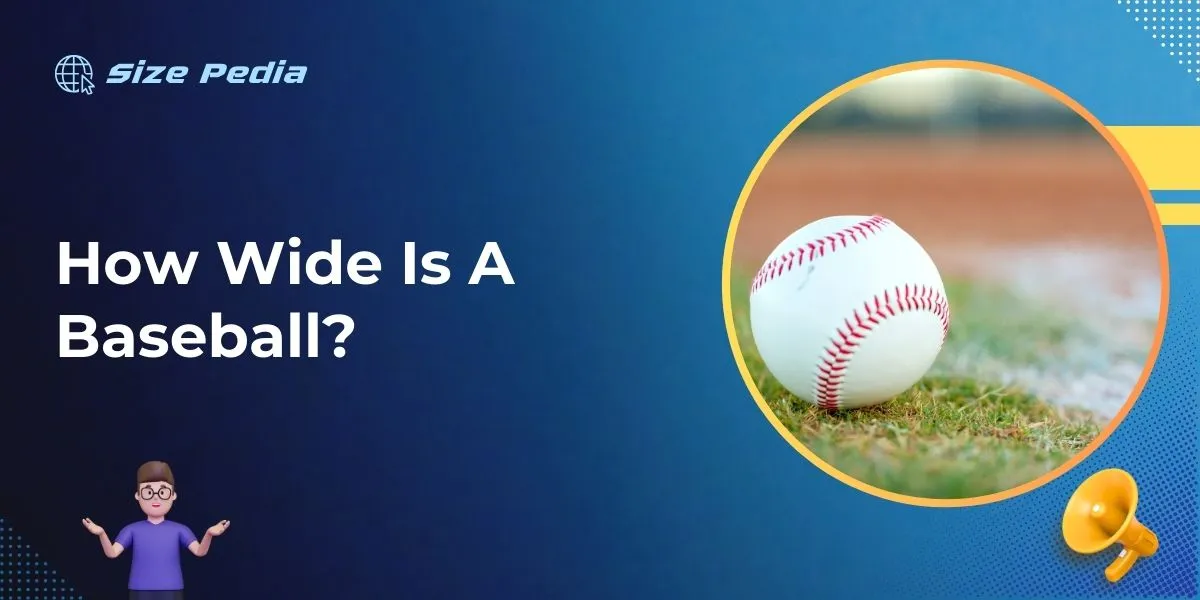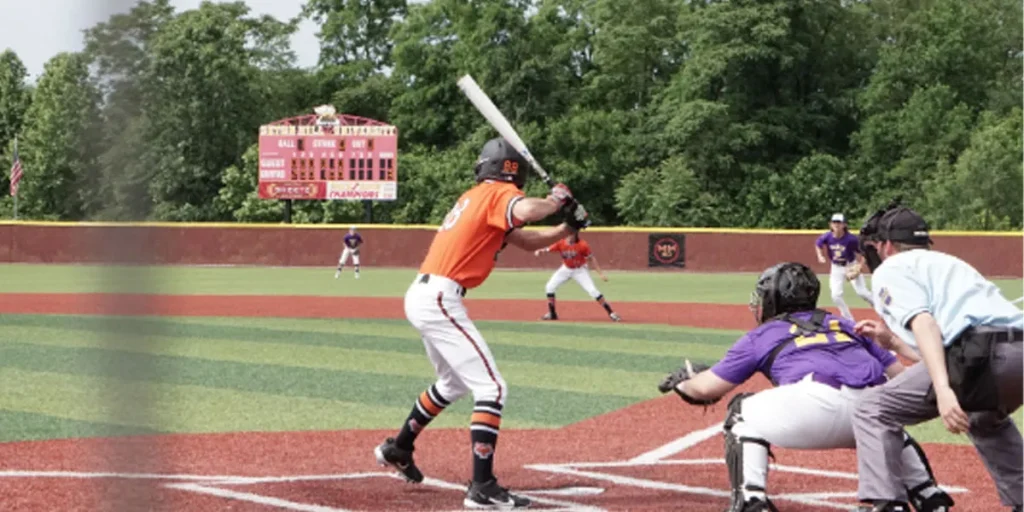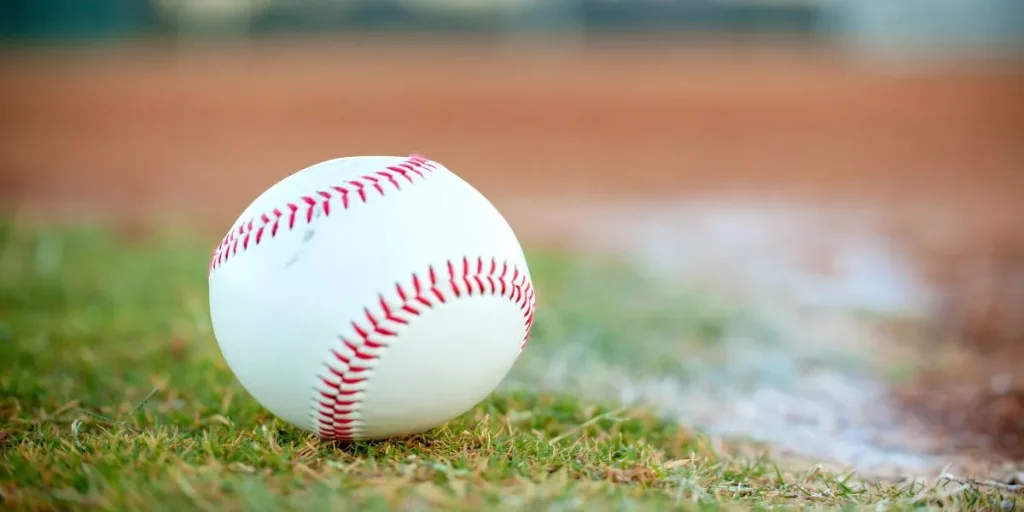A regulation baseball is approximately 9 to 9.25 inches in circumference. Its diameter is about 2.86 to 2.94 inches.
Exploring the intricacies of baseball dimensions reveals a world where precision meets tradition.
This small but vital piece of equipment is meticulously crafted to fit within the strict confines set by Major League Baseball (MLB) standards.
The size of a baseball is critical as it affects everything from the pitch speed to the ease of hitting the ball.
Designed for optimal grip, the baseball’s circumference and weight are engineered for performance and consistency.
Manufacturers ensure each ball meets these specifications so that each pitch, hit, and catch can be executed as intended by players at all levels, from amateur leagues to the pros.
The humble baseball, with its classic stitches and smooth leather, is a true icon of America’s beloved pastime.

Geometry Of Baseball
Baseball is not just a game of skill and statistics; it’s also a game rich in geometric understanding.
The official baseball is a masterpiece of symmetry and measurement precision.
Let’s unwrap the layers of a baseball and explore its size and shape.
Along The Seams: Ball Circumference
Each baseball has a consistent circumference, making it essential for uniform play.
The circumference is the distance around the ball, following the curves of the seams.
| League | Min Circumference | Max Circumference |
|---|---|---|
| Major League | 9 inches | 9.25 inches |
The seams play a key role in grip and pitch control.
Center To Surface: Ball Diameter
The diameter is a straight line from one point on the ball’s surface, through the center, to another point.
- Major League baseball diameter is about 2.9 inches.
- This measurement impacts the ball’s bounce and player grip.
Field Of Play: A Spatial Overview

Unravel the wonders of baseball’s playing space. A professional baseball field is a marvel in design, balancing space and strategy.
This ‘Field of Play: A Spatial Overview’ reveals the distances and sizes that make the game an American pastime.
From Home To Outfield: The Diamond Span
The heart of the baseball field is the diamond. This shape forms a square turned 45 degrees.
Each side of this square, known as the infield, measures 90 feet in Major League Baseball. The distance from home plate to the nearest fence, the point of the outfield, varies from field to field.
- Centerfield: Can range from 400 to 435 feet
- Right and left field: Usually around 330 feet
Baseline Distances: Key To Strategy
The baselines connect the bases in the infield. The path runners take during the game, these lines measure exactly 90 feet.
This specific distance shapes the game play in numerous ways, impacting stealing bases, double plays, and more.
| Baseline | Distance |
|---|---|
| Home to First | 90 feet |
| First to Second | 90 feet |
| Second to Third | 90 feet |
| Third to Home | 90 feet |
Precision In Play: Importance Of Measurements
Every sport relies on specific measurements to ensure the game is fair and consistent. Baseball is no exception.
The precise dimensions of equipment, like the baseball itself, play a crucial role. They impact how the game unfolds on the diamond.
Regulation Sizes: Ensuring Fair Play
The rulebook is clear: baseballs must meet certain standards. A professional baseball has a circumference of 9 to 9.25 inches and a diameter of approximately 2.86 to 2.94 inches.
Consistent size across all balls ensures each play is fair for pitchers, batters, and fielders alike.
| Measurement | Regulation Size |
|---|---|
| Circumference | 9 – 9.25 inches |
| Diameter | 2.86 – 2.94 inches |
Impact On Pitching And Hitting Dynamics
The size of a baseball influences how it moves through the air and reacts on contact. A standardized baseball allows pitchers to develop precise gripping techniques for different throws.
For hitters, the size dictates the sweet spot on the bat. Mastery of these elements separates the good players from the great ones.
- Pitchers refine throws like curveballs, sliders, and fastballs based on the ball’s size.
- Hitters adjust swing and contact point to maximize power and accuracy.
Historical Tape Measure

The baseball field, a green canvas setting the stage for countless historic plays, has seen its dimensions evolve over time.
These changes are more than just numbers; they’re part of the sport’s very fabric. Understanding the past is key to appreciating the game today.
Origins Of Current Standards
Baseball’s early days were marked by variety and flexibility.
- Infield sizes varied wildly.
- Distances were often determined by the field’s shape.
The game’s pioneers played without fixed rules, often tailoring field dimensions to suit the available space.
It wasn’t until 1857 when the first known regulations emerged. A convention of baseball clubs set the bases at ninety feet apart, a standard still in place today.
How Regulations Have Shaped The Game?
Standardized dimensions brought structure to baseball, influencing strategy and play.
- Uniform baselines ensured fair competition.
- Set distances changed how players trained and prepared.
- Regulations influenced the design of new stadiums.
By the 20th century, most major league fields had similar playing areas, allowing for a uniform experience.
These dimensions play a crucial role in strategy, player performance, and the sport’s ongoing evolution.
| Year | Change | Impact |
|---|---|---|
| 1857 | Base paths set at 90 feet | Standard playing area established |
| 1876 | Introduction of pitcher’s mound | New strategies and player positions |
| 1895 | Home plate set at 17 inches wide | Influenced pitching and batting techniques |
Measuring Skills: The Player’s Perspective
Measuring Skills: The Player’s Perspective takes into account how baseball players perceive and interact with the dimensions of the playfield they’re on.
Adapting To The Playfield
Baseball players must keenly adapt to the playfield’s size to perform at their best. The distance between bases, a mere 90 feet, requires swift decisions and rapid reactions.
Outfielders gauge the 300 feet to the fence to strategize their movements.
These precise dimensions shape a player’s understanding of the game, propelling them to adapt their play style accordingly.
As such, spatial awareness becomes a crucial skill, allowing them to navigate effectively and anticipate the play.
Training With Precision: The Professional Approach
For professionals, training with precision is non-negotiable. Athletes hone their skills focusing on the exact dimensions of the field. This meticulous approach involves:
- Drills tailored to simulate in-game situations.
- Repetition to internalize the field’s measurements, such as the pitcher’s mound at 60 feet 6 inches from home plate.
- Use of technology, like radar guns and motion analysis, for feedback.
Each session is strategically designed to reinforce muscle memory related to the field’s layout. This precision in training ensures that a player’s reactions become second nature during the game.
FAQs About the Width of a Baseball
What Are The Dimensions Of A Baseball?
A regulation baseball measures 9 to 9. 25 inches in circumference and 2. 86 to 2. 94 inches in diameter. Its weight ranges from 5 to 5. 25 ounces.
What Is The Radius Of A Baseball?
The radius of a standard baseball measures approximately 1. 46 inches (37 mm).
What Is The Width Of The Home Plate?
The width of a standard baseball home plate is 17 inches. This dimension is consistent across major league baseball.
What Are The Dimensions Of Baseball Bases?
Baseball bases are 15 inches (38 cm) square, with the exception of home plate, which has a unique pentagon shape.
Conclusion
Wrapping up, knowing the breadth of a baseball can enhance your appreciation of the sport. Every millimeter matters, from the pitcher’s grip to the batter’s swing.
Embrace this compact powerhouse’s dimensions and let the game’s precision amaze you. Keep this info in your fan toolkit; it’s sure to impress!
Resources:
https://guides.loc.gov/sports-industry/baseball
https://www.loc.gov/classroom-materials/baseball-across-a-changing-nation/
